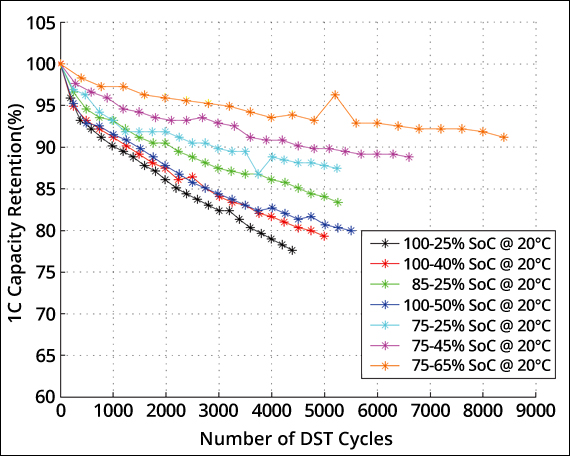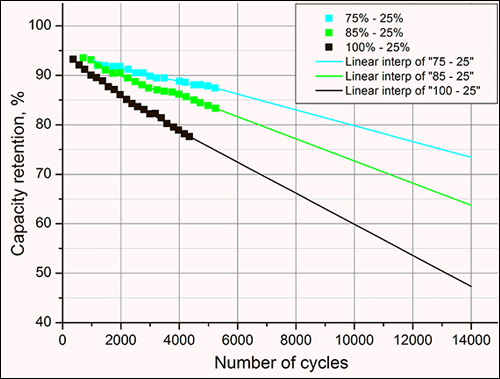So a few questions. I did basic circuits and stuff in middle school but obviously didn't retain anything close to useful knowledge wise to understand electric workings with ebikes.
1. Is it normal for the LCD display to not be accurate on ebikes in general? Seems like the volt reading on the display varies depending when you turn on the bike, even if you haven't ridden it at all.
2. Is the decline in power after use in mAh a function of some law of energy that affects all batteries and bikes, or is it something that manufactures don't try to overcome due to it being cost prohibitive?
3. If the 48V battery Juiced CCS is at full power when fully charge, but struggles when it gets to 30% and 42V, does that mean bikes like the RadCity would feel sluggish earlier? The RadCity starts at 48V 14Ah. So would it have the same power drop over time?
4. Useful cycles. What does it mean? Some of the pages I've found in a google search seem to say that it is how many cycles you could charge a battery and still have the capacity be over 80%. Is that how Juiced is using this term?
Found some info on the site.
Looks like they put the limit down to 70% which would mean more cycles. 2-3 years of everyday use having to fully charge it.
5. Juiced battery quality? How much does battery quality matter? Does anyone know if the batteries used in Juiced bike is of decent quality. RadPowerBikes specifically states they use 35E Cells from Samsung, I don't see anything from Juiced.
Just thought I would throw these out there, might be useful to others. I always ask a lot of questions.
(I use the RadPower bikes as a comparison as they seem to be the most like competitor and is the other bike I was considering.)
There is some really useful information on the Battery University website. They address most of your questions in detail.
Here's the Cliff Notes version:
1-A. Every device ever made has some variance. Two identical watches will not keep exactly the same time although both are within specified manufacturing tolerances. You can decrease the variance, but it will cost you. So the LCD is not meant to be laboratory test equipment. I'm sure you know this and don't mean to talk down if it comes across that way.
1-B. The volt reading can vary for a number of reasons. If you turn it on right after charging, it will read one thing. A while later, it will read slightly lower. A week later it will read lower than that. Other factors such as temperature can also affect the voltage, because batteries consist of a chemical reaction.
2. Yes, the power drops as a battery is used. This is more apparent with some types of batteries than with others. For instance, some batteries have an obvious and regular decrease in power while being used, while others display only a minor decrease until there is a sudden and drastic decline. Both have their place depending on function. Think of a flashlight. You don't want it remaining bright and suddenly going out unpredictably. It's better for the light to get progressively and predictably weaker so you can decide when to swap batteries.
3. All other things being equal, two batteries of equal voltage and chemistry will have very similar performance. If one has 14 amp hours and another has 8, the one with 14 will last longer, but the rate of decrease will be the same. To put it another way, if you had an 8Ah battery and a 14Ah battery for your CCS, you'd get the same performance at 46 volts from either one. But the 8 will get to 46 volts after fewer miles than the 14.
4-A. Useful cycles is how you define it. Most sources I've read use the 80% standard: X number of recharges before battery capacity is diminished to 80% of what it was when new. This is one you get to define however you want. If your battery is still making you happy at 60% of its original capability, then who's to say you're wrong?
4-B. How long it takes to accumulate those cycles is a bit of an unknown. A cycle is ideally assumed to be using the battery to 0% and then charging it to 100%. In practice, this almost never happens. Think of your cell phone. You may have let it get down really, really low, but how often does it actually cease working and shut itself down because it's totally run out of juice? Even then, it's not totally drained. Your cell phone is set to shut down when the voltage gets down to a certain voltage. My favorite ham radio handy-talky will shut down when a 12V battery gets down to 11V. Fully charged, the battery has 13.8 volts. If you consider 0 volts as "empty", it never gets close to empty!
4-C. So we're considering useful charge, not total charge. If your bike shut down when the battery got to, say, 38 volts, we would call that 0%. (I've never taken my bike that low so I don't know if it's 38V or 40V or whatever. In that respect, I'm willing to go with what the chart calls 0%: 39V.
4-D. So a full charge cycle would be from 39V to 54.6V. When they say 500 charge cycles before the battery decreases to 80% of original capacity, that's what they mean.
4-E. If you charge from 46.8V to 54.6V (50%-100%), that's a half-cycle, not a full cycle. On a 500-cycle battery, you could do that around 1,000 times before you got to the 80% of original capacity state.
5-A. Quality of the cells is the most important factor in battery performance and longevity. Lots of YouTube videos of guys taking various kinds of battery packs apart and testing them, and showing how poor cheapo batteries can be. Juiced does say that they use LG Chem batteries on their website. You have to dig down in the specs to find it. LG makes good batteries.
5-B. Whew.

